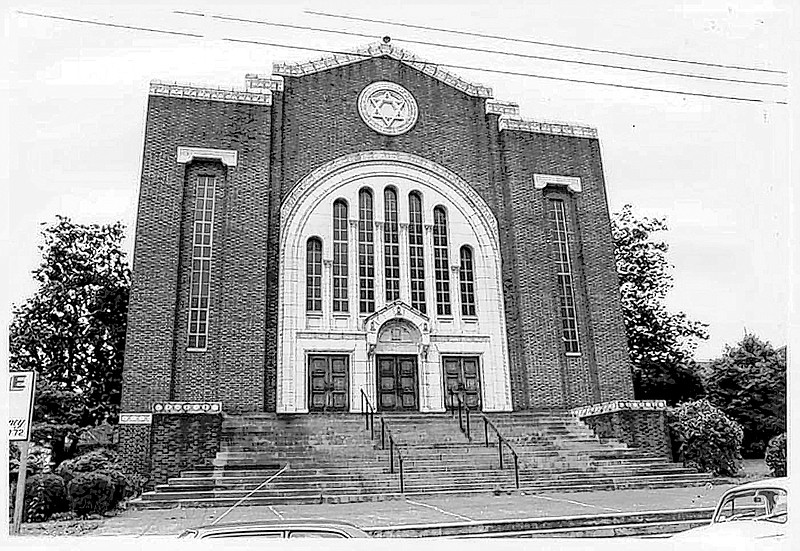Jewish immigration to the United States exploded from 1880 through 1920. Two million Jews, mostly from Eastern Europe, came to escape the horrible anti-semitism and to pursue the American Dream. America was the "golden country" with freedom of religion and incredible economic opportunities. Most settled in New York City and other large metropolitan areas, but some came South.
The history of B'nai Zion Synagogue also began in 1880, when Wolfe Brody, an arrival from Poland, brought his family to Chattanooga. He was instrumental in persuading other Jewish families to move. Chattanooga's Orthodox Jewish community was established.
Halman and Rueben Blumberg formed a peddler's supply business. The Blumbergs went to New York, found 40 prospective peddlers, paid their railroad fare to Chattanooga and supplied each one with merchandise and a territory.
The peddlers went from farm to farm selling otherwise unobtainable manufactured goods and brought news from the outside world. They were welcomed and fed by the farmers. Because the peddlers followed Jewish dietary laws, they mainly survived on eggs, vegetables and dairy products. Since the peddlers studied the Old Testament in Europe, they had much in common with rural East Tennesseans. As the peddlers prospered, they opened retail stores in Chattanooga and surrounding communities.
A synagogue was established. B'nai Zion became a flourishing congregation. On May 11, 1888, a Tennessee charter was issued. The first religious services were conducted in the Brody home. Each Friday evening and on Jewish holidays, the peddlers would return to the city for services in the company of fellow Jews. As the Jewish community grew, they rented a hall at 1208 Carter Street. The first president was Garrison Rauch, and the first religious leader was Jacob Friedman.
The social life of the community was closely interwoven with its religious life. B'nai Zion was a combined synagogue, community center and school. In 1891, after the Walnut Street Bridge was completed, the synagogue purchased land in North Chattanooga on Hedgewood Drive. This still serves as the B'nai Zion Cemetery.
Mrs. Wolfe Brody built the first "Mikvah," or ritual bath. A "Mikvah" is considered so important in Orthodox Judaism that a community is required to construct a Mikvah even before building a synagogue.
Mrs. Brody and Mrs. I. Long provided board for the peddlers. These boarding houses served the peddlers until they could bring their wives and families to Chattanooga from Europe. The Hebrew Ladies Aid Society was formed in 1903 to maintain the synagogue and to provide food, clothing and medical care for those in need. They provided funds for small business loans and aid to transients. This organization later became known as B'nai Zion Sisterhood, which still exists.
After six years of growth, the synagogue moved to its second home at 1027 Carter Street. Six years later that building was destroyed by fire, but not before Mr. L. Slabosky rushed into the burning building to save the Torahs. His hands were burned, his face was scorched, and he collapsed with the saved Torahs under his arms. He never fully recovered from the effects of the fire.
The next synagogue was at 1201 Chestnut St. However, by 1902, the growth of the Jewish community prompted the purchase of a new synagogue building at Fourteenth and Carter streets.
B'nai Zion congregation continued there until its membership and other needs required a larger building in a more central location. In 1929, property on Vine Street was purchased. In 1931, the new synagogue building was completed. Since this was during the Great Depression, the necessary funds were scarce. Adolph S. Ochs, publisher of The Chattanooga Times and The New York Times, though not a member, was the largest single contributor.
Many learned men served as religious leaders of B'nai Zion before the congregation could afford an ordained rabbi. Mr. Jacob Friedman studied for the rabbinate in Europe before coming to Chattanooga.
In 1921, the Rev. I. Maisel came to B'nai Zion and served more than two decades as cantor and "shochet," ritual slaughterer. The first ordained rabbi, Abraham Burstein, was hired during World War I. He also ministered to Jewish soldiers at Fort Ogelthorpe. In 1934, Rabbi Israel Gerstein was hired. He remained until 1947.
B'nai Zion Congregation is still vibrant after 127 years. In 1963, B'nai Zion officially changed from an orthodox synagogue, becoming a conservative congregation adding English to the service as well as egalitarian concepts and practices.
Sanford Winer is a retired CPA and a third generation, lifelong member of B'nai Zion Congregation. For more, visit chattahistoricalassoc.org or call LaVonne Jolley at 423-886-2090.
